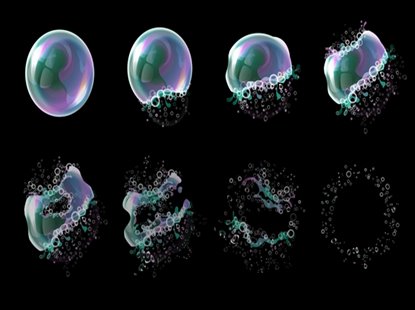How Defoamers Enhance Efficiency in Manufacturing and Production
How Defoamers Enhance Efficiency in Manufacturing and Production
Blog Article
The Role of Defoamers in Enhancing Item Top Quality and Efficiency
Defoamers serve as necessary additives that alleviate this issue, ensuring smoother manufacturing process while enhancing the aesthetic and useful characteristics of the last products. The option of the proper defoamer can be critical to accomplishing optimum outcomes, elevating important concerns about formulation compatibility and efficiency metrics that merit additional expedition.
Comprehending Defoamers
Understanding the function of defoamers is crucial for preserving item quality throughout numerous sectors. Defoamers are chemical ingredients designed to prevent the formation and minimize of foam in fluid systems, which can adversely impact processes such as blending, loading, and surface area stress. Foaming can result in ineffectiveness, product issues, and endangered visual charm, making defoamers a crucial part in producing procedures.
In industrial applications, defoamers help to enhance item consistency and security. The efficient use of defoamers not only makes certain smoother manufacturing processes however also contributes to remarkable item performance.
Furthermore, the option and formulation of a defoamer have to straighten with specific application needs, such as compatibility with other ingredients, effectiveness under varying temperature level and pH problems, and potential regulatory restrictions. Inevitably, recognizing defoamers' functions and their relevance in various formulas is crucial for maximizing production and making certain the finest output.
Kinds Of Defoamers
Defoamers can be classified right into several kinds based upon their make-up and device of activity. The main types consist of silicone-based, non-silicone organic, and not natural defoamers.
Silicone-based defoamers are among one of the most efficient, mostly as a result of their ability to spread promptly on the fluid surface and interrupt foam formation. Their distinct chemical structure enables for remarkable stability, making them ideal for high-temperature applications and environments with varying pH levels.
Non-silicone natural defoamers, usually composed of fatty acids or natural oils, are valued for their biodegradability and reduced toxicity. These are usually utilized in food and beverage applications where safety and security and environmental influence are extremely important.
Inorganic defoamers, that include substances like talc or calcium carbonate, act by enhancing the thickness of the fluid, consequently minimizing foam stability. They are usually used in industrial procedures where compatibility with various other materials is not a problem.
Each kind of defoamer has unique benefits and constraints, permitting tailored services relying on the details frothing issues come across in numerous applications. Recognizing these distinctions is critical for maximizing efficiency and attaining wanted product top quality.
Applications Throughout Industries
Numerous industries utilize defoamers to improve product top quality and operational performance. In the food and drink market, defoamers are important in procedures such as brewing and dairy products production to stop foam development, which can bring about inadequacies and product incongruity. By managing foam, makers can make certain better yield and an extra consistent product.
In the pharmaceutical sector, defoamers play a crucial role in the formulation of liquid medicines, where excessive foam can hamper blending and exact application. Their use aids preserve the stability of the solutions and helps with smoother manufacturing processes.
The paint and coatings industry additionally relies upon defoamers to boost the performance of items during application. By decreasing foam, these additives make certain a smoother surface and improve the aesthetic high qualities of the final product.

Benefits of Making Use Of Defoamers
While the application of defoamers varies throughout industries, their advantages regularly improve product top Full Article quality and procedure effectiveness. One substantial benefit is the decrease of foam development throughout manufacturing processes, which can otherwise result in manufacturing delays and disparities in product top quality. By lessening foam, defoamers allow a smoother flow of products, facilitating much more effective procedures and lowering the chance of devices malfunctions.
In addition, using defoamers can improve the look and texture of end products. In sectors such as finishes, paints, and food processing, too much foam can compromise the visual looks and total top quality, while the proper defoamer application makes sure an uniform finish and preferable features. Defoamers can add to set you back savings by reducing waste during production and enhancing the use of raw products.

Choosing the Right Defoamer
Choosing the ideal defoamer is important for optimizing production processes and making certain item top quality. The choice of defoamer affects not just the performance of foam control however also the general efficiency attributes of the end product. Factors to consider consist of the kind of application, the chemistry of the solution, and the environmental conditions under which the item will be made use of.
Various markets may require particular defoamer kinds, such as silicone-based, organic, or polymeric defoamers. Recognizing the compatibility of the defoamer with the key ingredients is necessary to avoid adverse reactions that could jeopardize item honesty. Furthermore, the defoamer's performance in different temperature levels and link pH levels need to be reviewed to make sure consistent performance.
Checking the defoamer in small applications can offer beneficial insights right into its performance and suitability. Factor to consider of governing conformity, particularly in food, drugs, and cosmetics, is vital in selecting a defoamer. Ultimately, blog here a complete analysis of these variables will cause the option of a defoamer that not just manages foam successfully however also enhances the high quality and efficiency of the last item.
Final Thought

In conclusion, defoamers are necessary additives that significantly improve item top quality and performance throughout different markets. By efficiently reducing foam formation, these agents not only enhance operational effectiveness but likewise add to the visual and practical integrity of products. The calculated selection and application of defoamers result in cost savings, optimized source use, and increased customer satisfaction. Overall, the relevance of defoamers in commercial procedures can not be overemphasized, as they play an important function in attaining consistent and top quality outcomes.
Frothing can lead to ineffectiveness, item issues, and endangered aesthetic charm, making defoamers a critical element in making operations.

Report this page